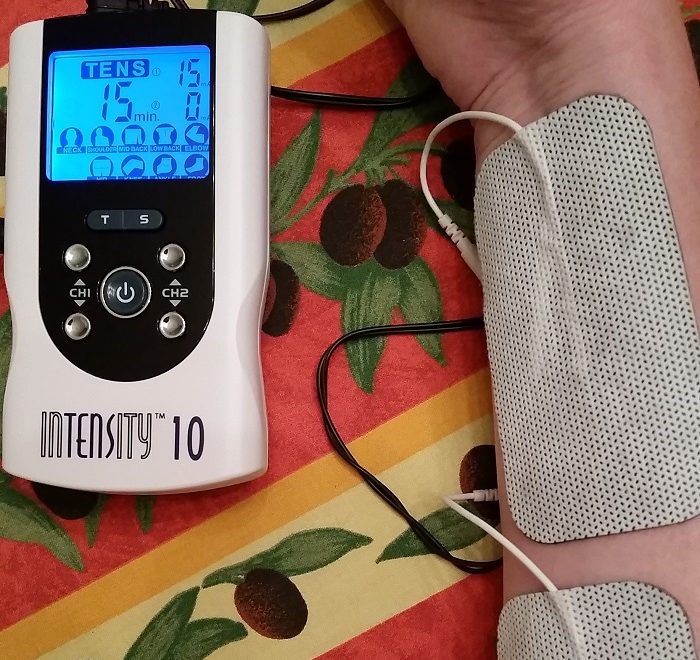Some of the many issues faced by chronic pain patients stem from the subjective nature of pain. It’s usually invisible, often misunderstood, and can be very difficult to explain.
One of the hardest things about chronic pain is that only you know how bad the pain feels. There’s no blood test that can show much you’re suffering. There’s often no outward sign, like a bandage or a cast. There’s just the pain.”(1)
Most people can immediately grasp the pain level of a patient with acute pain from appendicitis, a fracture, or kidney stones. Or the pain a woman might feel during childbirth.
But when it comes to chronic pain conditions, it’s often up to the patient to try to explain what they’re experiencing – even to doctors and nurses. This can be overwhelming, particularly when a person is in excruciating pain.
Added to that, most patients aren’t well-versed in the clinical terminology of pain. Burning, pulsing, stabbing, throbbing; a patient in pain may not be able to differentiate between the many types of pain. It just hurts!

And the rating systems for pain, used by pain clinics and specialists, can be confusing for patients. For example: “Rate your pain on a scale of 1 to 10, with 10 being the worst pain you’ve ever experienced.” But what if the pain you’re in IS the worst you’ve ever experienced?
Of course, one inherent problem with using a pain scale is that it’s still subjective. A stoic person might describe their pain as a 2 on the pain scale, while another person would describe the same pain as a 6″.(1)
So the idea has come up of creating some kind of medical tool – a machine or test – to measure an individual’s pain level. My first thought, naturally, is of how this could apply to my own disease; Complex Regional Pain Syndrome (CRPS). Which used to be called RSD, Reflex Sympathetic Dystrophy.
It’s a condition known to cause severe pain, of several different types. There’s the allodynia, an extreme sensitivity of the skin in the affected areas; to touch, temperature, even a breeze. Then there’s the excruciating neuropathic or nerve pain.
In my case, I can identify seven specific types of pain from CRPS. At any given moment, each of these pain levels can be different. So I’m curious how any test would measure this. Would it calculate an average of the levels of all my various types of pain?
Or would it rate my pain as the highest of the current levels? Or the lowest? What about pain flares, those instances in which my pain level goes “off the chart”? That’s usually the neuropathic pain, the point at which it causes me to faint or vomit.
There are lots of problems that come with trying to measure pain… I think the obsession with numbers is an oversimplification. Pain is not unidimensional. It doesn’t just come with scale – a lot or a little – it comes with other baggage: how threatening it is, how emotionally disturbing, how it affects your ability to concentrate.”(2)
How could a pain testing machine or tool account for those factors? I simply can’t imagine any such tool being able to truly capture and objectively rate the entire experience of an individual’s pain.
Because my background is in biomedical ethics, bioethics, I also have concerns about how this type of test would be used – and why. How would this information be protected? Would it be considered medical data?
Currently, here in Canada, even the results of in-hospital genetic testing aren’t protected as personal health information. If an employer or insurer requests a person’s genetic test results, their hospital or doctor must provide them.
Hopefully the draft Genetic Non-Discrimination Act (GNA) will soon be approved, and come into effect later this year or in early 2018.
In the meantime, imagine the same situation with any potential pain test. That a physician or pain clinic could be forced to provide the test results to a patient’s employer or insurance company. Even if they felt the results didn’t accurately reflect that person’s pain level(s).
Why am I writing about this? Pain researchers have been experimenting with neuroimaging, brain scans, to try to identify different types of pain. Almost as soon as their research was published, the lead researcher was asked to testify in a court case – to determine whether a patient was telling the truth about their pain.
Luckily, this researcher was well aware of both the potential for false or misleading results of such testing. If for no other reason than that each of our brains is different, but the tests are based on a limited number of brain scans.
This means that the brain scan data collected from pain experiments may very simply not apply to anyone else. The neuronal pattern or activity in a person’s brain may vary significantly from the brains of someone else.
People want to push us into saying this is an objective biomarker for detecting that someone’s in pain. But the research is in carefully controlled laboratory conditions. You cannot generalize about the population as a whole. I told the attorneys, ‘This is too much of a leap.’ I don’t think there’s a lot of clinical utility in having a pain-o-meter in a court or in most clinical situations.”(2)
For now, the situation is more “pain-no-meter” than “pain-o-meter”.
As always, thanks for reading! Feel free to comment here, or to send me a direct message on Twitter. Have a happy day ,-)
References:
(1) R. Morgan Griffin (Reviewed by Brunilda Nazario). “Using the Pain Scale: How to Talk About Pain”. WebMD. 09 Mar 2011. Online. Accessed 20.01.2017. Web (may be paywalled/protected): https://www.webmd.com/pain-management/features/pain-scale
(2) Walsh, John. “We’re terrible at measuring other people’s pain – but researchers think there is a better way to treat it”. Quartz: Ideas. Online. 12 Jan 2017. Web:
https://qz.com/884076/were-terrible-at-measuring-other-peoples-pain-now-researchers-are-finding-better-ways-to-treat-it/

